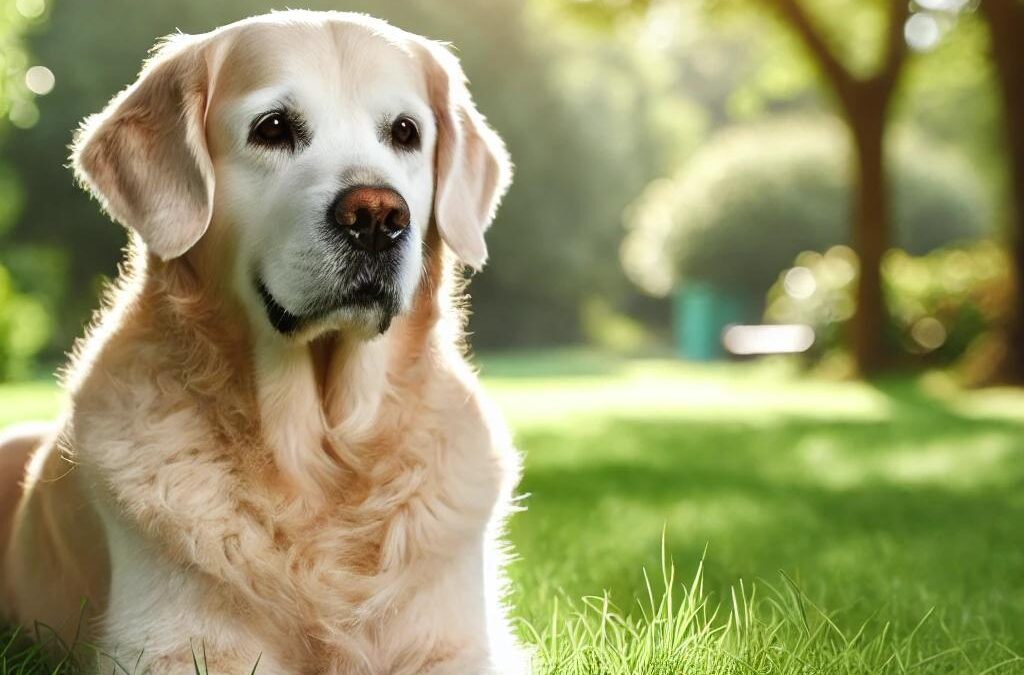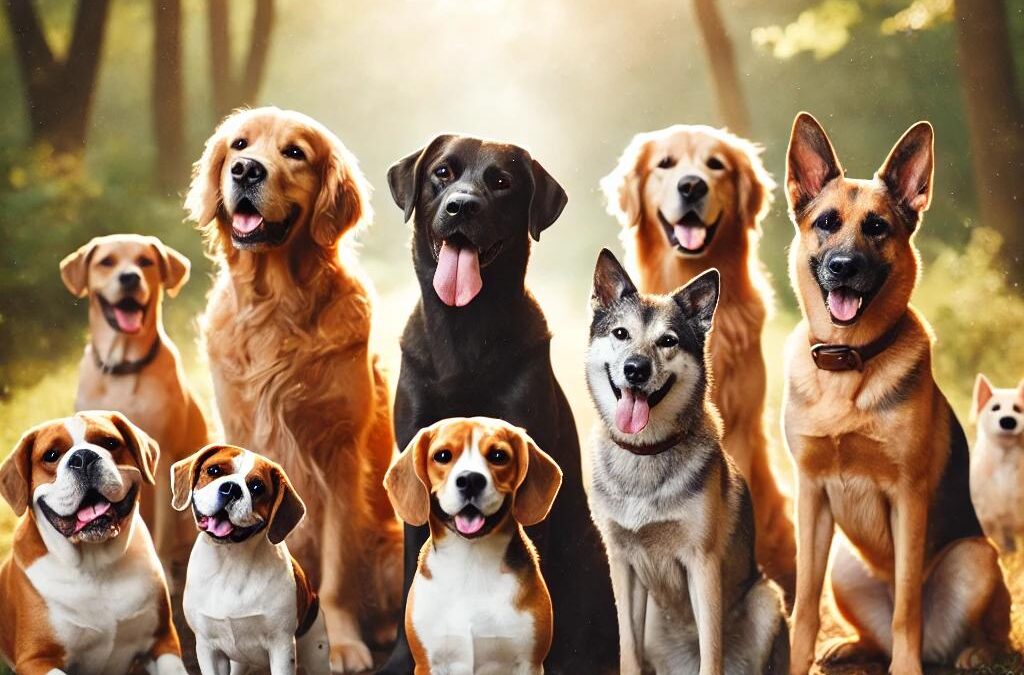
執筆者 TCMVET | 2024年9月5日 | 犬の癌と腫瘍
受動喫煙は、人間に有害な影響を与えることが長い間知られてきましたが、ペット、特に犬の深刻な健康問題にも関連しています。受動喫煙にさらされた犬にとって最も懸念される健康リスクの 1 つは、肺腫瘍を発症する可能性が高くなることです。犬の肺がんは比較的まれですが、研究では、タバコの煙にさらされた犬は、このタイプのがんを発症するリスクが著しく高くなる可能性があることが示唆されています。この記事では、犬にとっての受動喫煙の危険性、肺腫瘍の兆候、ペットを守るために取るべき対策について説明します。
受動喫煙が犬に与える影響
受動喫煙は、タバコ、葉巻、その他のタバコ製品の燃焼から放出される有毒化学物質と、喫煙者が吐き出す煙から構成されます。喫煙が行われる家庭で暮らす犬は、これらの有害物質にさらされ、時間が経つにつれて体内に蓄積される可能性があります。
人間と同様に、犬も受動喫煙にさらされると呼吸器系の問題、炎症、慢性肺疾患を引き起こす可能性があります。しかし、長期間の曝露による最も深刻な結果は、特に高齢犬の場合、肺腫瘍を発症するリスクが高まることです。これらの腫瘍は、犬のサイズや品種に応じて、肺、気管支、さらには鼻腔に発生することがあります。
なぜ犬は受動喫煙の影響を受けやすいのでしょうか?
- 敏感な呼吸器系
犬の呼吸器系は敏感で、肺はタバコの煙に含まれるような有害な化学物質に長時間さらされることに耐えるほどの能力がありません。ブルドッグ、パグ、ボクサーなど鼻が短い犬種は、鼻腔の濾過能力が低いため、毒素を吸い込みやすくなっています。
- 煙への近さ
犬は飼い主の近くで過ごすことが多いため、受動喫煙を吸い込む可能性が高くなります。犬は床に横たわることが多いため、カーペット、家具、ペットのベッドなどの表面に付着する有毒な残留物である三次喫煙にもさらされます。時間が経つにつれて、これらの化学物質が犬の肺に蓄積し、がんのリスクが高まります。
- 高齢犬の免疫力低下
高齢犬、特に10歳以上の犬は免疫力が弱く、受動喫煙の有害な影響を受けやすくなります。犬の免疫力は加齢とともに低下するため、損傷した細胞を修復する能力が低下し、がんが発生する可能性が高くなります。
受動喫煙と犬の肺腫瘍の関連性
研究によると、喫煙する家庭で暮らす犬は、禁煙の環境で暮らす犬に比べて肺がんを発症するリスクが高いことがわかっています。リスクが高まるのは、ニコチン、ホルムアルデヒド、ベンゼンなど、タバコの煙に含まれる発がん性物質が原因で、時間が経つと肺組織にダメージを与える可能性があります。これらの有毒物質を吸入すると、肺の細胞に変化が生じ、悪性腫瘍の発生につながる可能性があります。
特定の犬種は、遺伝的にがんになりやすい、または呼吸器官に敏感なため、さらに高いリスクにさらされる可能性があります。たとえば、コリーやグレイハウンドなどの鼻の長い犬種は鼻がんになりやすい傾向があり、鼻の短い犬種は肺がんになりやすい傾向があります。
犬の肺腫瘍の兆候
犬の肺腫瘍の発見は、癌が進行するまで症状が現れないことがあるため、難しい場合があります。ただし、肺癌を示唆する一般的な兆候には次のようなものがあります。
- 持続的な咳治療しても治まらない慢性の咳は、肺がんの兆候である可能性があります。
- 呼吸困難呼吸が苦しかったり速かったりする場合は、肺に問題がある可能性があります。
- 無気力と疲労エネルギーレベルの顕著な低下は病気の兆候である可能性があります。
- 体重減少原因不明の体重減少は深刻な健康問題を示している可能性があります。
- 食欲減少食事への興味の欠如も肺がんの潜在的な兆候の1つです。
愛犬がこれらの症状のいずれかを示し、受動喫煙にさらされた場合は、獣医の診察を受けることが重要です。肺腫瘍を早期に発見することで、治療結果が大幅に改善されます。
犬の肺がんの診断と治療
肺がんが疑われる場合、獣医師は肺に異常な腫瘍がないかを調べるために、X 線や超音波などの診断検査を行います。腫瘍が悪性かどうかを判断するために生検を行うこともあります。診断が確定すると、治療の選択肢には次のものがあります。
- 手術: 腫瘍が局所的である場合、外科的切除が可能な場合があります。これは、早期の肺がんの場合、多くの場合、最善の治療法です。
- 化学療法と放射線療法手術が選択できない場合、または癌が転移している場合は、化学療法と放射線療法を使用して腫瘍を縮小し、病気の進行を遅らせることがあります。
- 緩和ケア進行した肺がんの場合、症状を管理し犬の生活の質を向上させるために緩和ケアが推奨される場合があります。
受動喫煙から愛犬を守る方法
受動喫煙の危険から愛犬を守る最善の方法は、禁煙の環境を作ることです。以下にいくつかの手順を示します。
- 屋内では喫煙しないでください: 喫煙する場合は、ペットが有害な化学物質にさらされるのを最小限に抑えるために、屋外でペットから離れた場所で喫煙してください。
- 密閉された空間での喫煙は避けてください: 車内や、犬が濃い煙にさらされる可能性のある密閉された空間では絶対に喫煙しないでください。
- 定期的に家を掃除する: カーペットに掃除機をかけ、犬の寝具を頻繁に洗って、表面から三次喫煙の残留物を除去します。
- 禁煙する喫煙の有害な影響から犬とあなた自身を守る最も効果的な方法は、喫煙を完全にやめることです。
受動喫煙は犬にとって深刻な健康被害をもたらし、肺腫瘍やその他の呼吸器疾患を発症するリスクを高めます。喫煙する飼い主は、その危険性を認識し、犬がタバコの煙にさらされるのを最小限に抑える対策を講じる必要があります。禁煙環境を作ることで、犬の健康を守り、肺がんやその他の病気の可能性を減らすことができます。

執筆者 TCMVET | 2024年9月5日 | 犬の癌と腫瘍
As dogs age, they become more susceptible to various health issues, including cancer. One type of cancer that disproportionately affects senior dogs is lung cancer. While lung cancer in dogs is relatively rare, older dogs are at a higher risk of developing this disease. Understanding the reasons behind this increased risk and the symptoms of lung cancer in senior dogs can help pet owners take preventive steps and ensure early detection.
Why Are Senior Dogs at Greater Risk for Lung Cancer?
- Natural Aging Process
As dogs age, their bodies undergo a natural decline in cellular regeneration and immune function. This means that older dogs are more likely to experience mutations in their cells, which can lead to the development of cancer. Cells in the lungs, like other tissues in the body, are subject to this process, making senior dogs more vulnerable to lung tumors.
- Longer Exposure to Environmental Toxins
Senior dogs have been exposed to environmental toxins for a longer period of time compared to younger dogs. Toxins such as pollutants, chemicals, and even secondhand smoke can accumulate in their bodies over the years. These substances can damage lung tissue, making it more likely for tumors to form. Dogs living in urban environments or households where smoking occurs may face an even higher risk.
- 免疫力の低下
The immune system plays a crucial role in identifying and destroying cancerous cells before they can spread. However, as dogs age, their immune system weakens, making it less effective at eliminating abnormal cells. This decline in immune function increases the likelihood of lung cancer developing in senior dogs.
- Chronic Respiratory Conditions
Older dogs are more prone to chronic respiratory conditions such as bronchitis or infections, which can weaken lung tissue over time. Chronic inflammation in the lungs can create an environment where cancer cells are more likely to thrive. Dogs with a history of respiratory issues should be monitored closely for signs of lung cancer as they age.
Common Symptoms of Lung Cancer in Senior Dogs
Lung cancer in dogs often develops without noticeable symptoms in its early stages, making it challenging to detect. However, as the disease progresses, certain signs may appear. These include:
- Persistent cough: A dry, persistent cough that does not resolve over time may be an early sign of lung cancer.
- 呼吸困難: Labored breathing or shortness of breath could indicate a problem with the lungs.
- 無気力: A noticeable decrease in energy levels or reluctance to exercise can be a warning sign.
- 食欲減少: If your senior dog suddenly loses interest in food, it could be a sign of illness.
- 原因不明の体重減少: Rapid or unexplained weight loss is often a symptom of cancer in dogs.
- 鼻汁: Any unusual discharge from the nose may be related to lung problems.
If your senior dog exhibits any of these symptoms, it’s essential to consult a veterinarian for a thorough examination. Early detection of lung cancer can improve the chances of successful treatment.
Diagnosis of Lung Cancer in Senior Dogs
If lung cancer is suspected in a senior dog, a veterinarian will typically begin with imaging tests such as x-rays or ultrasounds to check for tumors in the lungs. These tests can reveal the size, location, and spread of any abnormal growths. In some cases, additional tests like CT scans or biopsies may be needed to confirm a diagnosis and determine the type of lung cancer.
Types of Lung Cancer in Senior Dogs
There are several types of lung cancer that can affect dogs, the most common being 腺癌, which originates in the cells lining the lung tissues. Other types include 扁平上皮癌 そして bronchial carcinoma. These cancers can vary in terms of aggressiveness and potential to spread (metastasize) to other organs.
In older dogs, tumors are often more aggressive due to the weakened immune system and prolonged exposure to risk factors.
Treatment Options for Lung Cancer in Senior Dogs
Treatment for lung cancer in senior dogs depends on the type and stage of the cancer. Common treatment options include:
- 手術: If the tumor is localized and has not spread, surgery to remove the affected lung lobe may be an option. This can be a highly effective treatment if the cancer is caught early.
- 化学療法: Chemotherapy may be used in cases where surgery is not possible or when the cancer has spread to other parts of the body. Chemotherapy helps slow the progression of the disease, though it may not cure it.
- 放射線治療: Radiation is sometimes used in conjunction with surgery or chemotherapy to shrink tumors and alleviate symptoms.
- 緩和ケア: In cases where the cancer is advanced, palliative care may be recommended to improve the dog’s quality of life and manage symptoms like pain or difficulty breathing.
How to Prevent Lung Cancer in Senior Dogs
While lung cancer cannot always be prevented, there are steps you can take to reduce your dog’s risk:
- Avoid secondhand smoke: Do not smoke around your dog, as exposure to secondhand smoke increases the risk of lung cancer.
- Keep your dog active: Regular exercise helps maintain lung health and boosts the immune system.
- Provide a healthy diet: A balanced diet rich in antioxidants can help support your dog’s overall health.
- Regular veterinary checkups: Annual or biannual vet visits are crucial, especially for senior dogs, to catch any signs of cancer early.
As dogs age, they become more susceptible to lung cancer due to factors such as a weakened immune system, longer exposure to toxins, and chronic respiratory conditions. Pet owners should be aware of the symptoms of lung cancer in senior dogs and seek veterinary care if any signs arise. Early diagnosis and appropriate treatment can improve your dog’s quality of life and longevity.

執筆者 TCMVET | 2024年9月5日 | 犬の癌と腫瘍
犬の原発性肺腫瘍は非常にまれで、100,000 匹の犬のうち 4 匹にしか発生しません。まれであるにもかかわらず、近年、犬の肺腫瘍の診断が増加しています。この増加は、犬の寿命が長くなり、自然に加齢に伴う病気にかかりやすくなったことに起因している可能性があります。さらに、受動喫煙の増加も一因として特定されています。原発性肺がんの検出は難しい場合がありますが、原因とリスク要因を理解することで、犬の飼い主は警戒を怠らず、必要な予防策を講じることができます。
犬の原発性肺腫瘍とは何ですか?
犬の原発性肺腫瘍は、肺組織自体に発生する腫瘍で、体の他の部分から肺に広がる二次性腫瘍とは異なります。このタイプの腫瘍はまれですが、高齢の犬に最も多く見られ、診断時の平均年齢は 10 歳です。他の種類の癌とは異なり、原発性肺腫瘍は犬種や性別による傾向が見られないため、すべての犬が潜在的にリスクにさらされています。
原発性肺腫瘍の種類
犬の原発性肺腫瘍の最も一般的なタイプは 腺癌は、犬の原発性肺がん全体の 80% を占めています。腺がんは肺組織の内層に発生し、主に気管支、細気管支、または肺胞に影響を及ぼします。これらの腫瘍は、ゆっくりと成長するものから非常に悪性度の高いものまでさまざまです。
2番目に多いタイプは 扁平上皮癌扁平上皮がんは気道の内壁細胞に発生します。腺がんほど一般的ではありませんが、扁平上皮がんのリスクは依然として重要です。
犬の原発性肺腫瘍の他のあまり一般的ではない種類には、以下のものがあります。
これらの腫瘍の種類はそれぞれ、診断と治療の面で独自の課題を伴います。
原因と危険因子
- エージング
犬の肺がんの主なリスク要因の 1 つは年齢です。原発性肺腫瘍は 10 歳以上の犬に最も多く見られます。獣医のケアと栄養の進歩により犬の寿命が延びるにつれ、がんなどの加齢に伴う病気の可能性も当然増加します。
- 受動喫煙
人間と同様、受動喫煙は犬の肺がんリスク増加と関連しています。喫煙が行われる家庭で暮らす犬は発がん物質を吸い込む可能性があり、それが時間の経過とともに肺組織を損傷し、腫瘍の発生につながる可能性があります。
- 環境毒素
化学物質、アスベスト、その他の空気中の毒素などの環境汚染物質にさらされると、犬の肺腫瘍のリスクも高まる可能性があります。大気汚染がより一般的な都市環境では、このような癌を発症するリスクがさらに高くなる可能性があります。
- 既存の健康状態
慢性気管支炎や肺感染症などの特定の既往症は肺を弱め、癌性腫瘍を発症するリスクを高める可能性があります。呼吸器疾患の病歴がある犬は、年齢を重ねるにつれて注意深く監視する必要があります。
- Genetics
原発性肺腫瘍には特定の犬種が原因となる素因はありませんが、遺伝子変異や遺伝的要因が原因となる場合もあります。ただし、明確な遺伝的関連性を確立するには、この分野でさらに研究が必要です。
原発性肺腫瘍の診断
犬の原発性肺腫瘍の診断は難しい場合があります。腫瘍がかなり大きくなるまで症状が現れないことが多く、早期発見が困難です。注意すべき一般的な兆候は次のとおりです。
- 持続的な咳
- 呼吸困難
- 無気力
- 食欲減少
- 原因不明の体重減少
獣医師は、肺の異常な腫瘍を検出するために胸部X線検査や超音波検査を行うことがあります。しかし、肺膿瘍、嚢胞、肉芽腫(真菌感染や寄生虫が原因)などの非癌性疾患が腫瘍のように見えることがあるため、これらの画像は誤解を招くことがあります。確定診断には通常、腫瘍が悪性かどうかを判断するための生検が必要です。
治療の選択肢
原発性肺がんと診断された場合、その治療計画は腫瘍の種類、大きさ、進行度に応じて異なります。 外科的切除 腫瘍の切除は、特に腫瘍が肺の片葉に留まっていて転移していない場合、最も一般的で効果的な治療法です。肺は再生できるため、犬は術後に回復する可能性が高いです。
手術が不可能な場合には、 化学療法 または 放射線治療 特に、より悪性度の高い腫瘍や手術不能な腫瘍の場合、これらの治療法が考慮されることがあります。ただし、これらの治療法は通常、治癒ではなく延命を目的としています。
犬の原発性肺腫瘍はまれですが、寿命の延長や受動喫煙などの環境要因により、発生率は上昇しているようです。特にペットが高齢になるにつれて、飼い主は注意を怠らず、呼吸器系の問題が生じた場合はすぐに獣医の診察を受ける必要があります。早期診断と治療により、犬の生活の質と寿命が大幅に改善されます。

執筆者 TCMVET | 2024年9月5日 | 犬の癌と腫瘍
Liver cancer in dogs, while not among the most common forms of cancer, can pose a serious threat to your pet’s health if not caught early. According to research, liver tumors account for approximately 1.5% of all canine tumors. Though this percentage is relatively small, early detection plays a crucial role in successful treatment. Understanding the symptoms and types of liver cancer can help pet owners ensure timely veterinary care for their dogs.
What is Liver Cancer in Dogs?
In many cases, liver tumors in dogs are metastatic, meaning that they have spread from other parts of the body rather than originating in the liver itself. These metastatic tumors are often benign, which offers a more favorable prognosis.
However, in some instances, dogs can develop primary liver tumors, which start directly in the liver. The most common type of primary liver cancer in dogs is 肝細胞癌, accounting for over 50% of primary liver cancers. Although these tumors tend to remain confined to the liver, they are often malignant and can be challenging to treat.
Causes and Risk Factors for Canine Liver Cancer
The exact causes of liver cancer in dogs remain unclear. Unlike some other cancers, liver cancer doesn’t seem to have a specific breed predisposition. However, age is a significant factor, with liver cancer being more common in dogs over 10 years old. Some studies also suggest that male dogs may be at slightly higher risk, but this has not been conclusively proven.
Symptoms of Liver Cancer in Dogs
Detecting liver cancer early can drastically improve treatment outcomes. Pet owners should watch for the following symptoms and seek veterinary attention if they notice any of these signs:
- 食欲減少
- 原因不明の体重減少 (especially a rapid loss of over 10% body weight)
- Lethargy or fatigue
- Increased thirst
- 嘔吐または下痢
- Noticeable abdominal mass
- Jaundice (yellowing of the skin or eyes)
- Frequent urination or blood in urine
- Confusion or disorientation
These symptoms may indicate liver cancer, but they can also be related to other health issues. It is important to visit a veterinarian for a proper diagnosis.
Diagnosing Liver Cancer in Dogs
If a veterinarian suspects liver cancer, they will typically begin with a physical examination to detect any masses or abnormalities in the abdominal area. Blood and urine tests may be conducted to evaluate liver function. However, the most definitive way to diagnose liver cancer is through imaging tests like x-rays または ultrasounds, which can identify tumors or growths in the liver.
Types of Liver Cancer in Dogs
Liver cancers in dogs are categorized based on their appearance and how they spread:
- Massive Tumors: These are large, singular masses that typically form in one area of the liver. They are less likely to spread than other types.
- Nodular Tumors: These smaller masses appear in multiple locations within the liver and are more likely to metastasize to other organs.
- Diffuse Cancer: This form consists of cancer cells dispersed throughout the liver, making it difficult to treat as there are no distinct tumors to remove.
A Hepatocellular Adenoma refers to a benign liver tumor, which, though not as dangerous, may still require surgical removal based on its size and location.
Treatment Options for Liver Cancer in Dogs
The treatment plan for liver cancer in dogs varies depending on the type, size, and spread of the tumor. Common treatments include:
- 外科的除去: The most effective treatment for many liver cancers involves surgically removing the tumor. Since the liver can regenerate, dogs often recover well after surgery, though they may need ongoing dietary and health management.
- 化学療法と放射線療法: These therapies may be recommended in combination with surgery or as a standalone treatment, depending on the cancer’s stage and type.
- 薬: Some cancers may be managed with medications that help slow their progression or alleviate symptoms.
Every case of liver cancer is unique, and a veterinary oncologist can provide personalized treatment recommendations based on your dog’s specific situation.
Liver cancer in dogs is a serious condition that requires early detection and prompt treatment for the best possible outcomes. Being aware of the symptoms, such as sudden weight loss, jaundice, or a noticeable abdominal mass, can help dog owners take swift action. Regular vet checkups and monitoring your dog’s health are essential, particularly for older dogs, to catch any signs of liver cancer early.

執筆者 TCMVET | 2024年9月5日 | 犬の癌と腫瘍
がんは犬にとって最大の健康問題のひとつで、サイズ、年齢、血統を問わず、多くの犬種に影響を与えています。しかし、一部の犬種は遺伝的に他の犬種よりも特定の種類のがんを発症しやすい傾向があります。どの犬種のリスクが高いかを理解すれば、飼い主はペットの健康についてより注意深く、積極的になることができます。この記事では、がんにかかりやすい犬種と、ペットの飼い主が注意すべき兆候について説明します。
がんに最もかかりやすい品種
- ゴールデンレトリバー ゴールデン レトリバーは、がんになりやすい犬種として最もよく知られています。研究によると、ゴールデン レトリバーの約 60% が生涯に何らかのがんを発症し、血管肉腫とリンパ腫が最も一般的です。これらのがんは悪性度が高いため、早期発見が重要です。
- ボクサー ボクサー犬も癌、特に皮膚に影響を及ぼす肥満細胞腫にかかりやすい犬種です。また、リンパ腫や脳腫瘍にもかかりやすいです。獣医師による定期的な検査は、命に関わる問題になる前にこれらの病気を発見するのに役立ちます。
- バーニーズ・マウンテン・ドッグ バーニーズ マウンテン ドッグは、脾臓、肝臓、その他の臓器に影響を及ぼす特に悪性の癌である組織球肉腫を発症するリスクが高くなります。残念ながら、この癌の予後は不良であることが多いため、定期的な健康状態の監視が不可欠です。
- ロットワイラー ロットワイラーは、骨肉腫という骨がんの一種にかかりやすい犬種です。この悪性腫瘍は急速に広がり、患肢の切断が必要になることも少なくありません。足を引きずったり、四肢が腫れたりするなどの初期症状には、すぐに対処する必要があります。
- ジャーマンシェパード ジャーマン シェパードは、特に脾臓や心臓に血管肉腫を発症することが知られています。このタイプの癌は初期症状がほとんど見られないため、進行した段階で診断されることが多く、この犬種では定期的な獣医による検査が特に重要です。
- ラブラドールレトリバー ラブラドール レトリバーは、一般的には健康ですが、特にリンパ腫や肥満細胞腫などの癌になりやすい犬種でもあります。これらの癌はさまざまな臓器に影響を及ぼす可能性があり、最良の予後を得るにはすぐに治療する必要があります。
- ビーグル ビーグル犬は他の犬種よりも膀胱がんを発症する可能性が高くなります。膀胱がんは治療可能ですが、早期発見しないと急速に進行する可能性があります。ビーグル犬の飼い主は、血尿や排尿困難などの兆候に注意する必要があります。
- プードル スタンダードプードルは、リンパ腫や血管肉腫など、いくつかの種類の癌にかかりやすい傾向があります。定期的な獣医の診察と健康的なライフスタイルは、リスクを軽減し、癌を早期に発見するのに役立ちます。
注意すべき兆候
犬の癌の症状は腫瘍の種類と場所によって異なりますが、一般的な兆候は次のとおりです。
- 原因不明の体重減少
- 体のしこりや腫れ
- 呼吸困難
- 手足の不調や腫れ
- 食欲減少
- 異常な出血や分泌物
これらの症状のいずれかが現れた場合は、できるだけ早く獣医師に相談することが重要です。
早期発見と予防
がんを確実に予防する方法はありませんが、早期発見により犬の生存率を大幅に向上させることができます。定期的な獣医による検査、バランスの取れた食事、健康的な体重の維持により、犬のがんリスクを軽減できます。遺伝子検査は、特定の種類のがんに対する素因を示す可能性があるため、リスクの高い犬種の飼い主にも役立ちます。
多くの犬種は癌になりやすいですが、早期発見と予防ケアは治療結果に大きな違いをもたらします。ペットの飼い主は、自分の犬種の健康リスクについて常に情報を得て、獣医師と定期的にコミュニケーションを取り、愛犬が長く健康に暮らせるようにする必要があります。

執筆者 TCMVET | 2024年9月3日 | 犬の癌と腫瘍
Melanoma is a type of cancer that affects the melanocyte cells responsible for producing melanin, the pigment that gives color to a dog’s skin, fur, and eyes. While melanoma can develop in any dog, certain breeds are more predisposed to this disease due to their genetic makeup. Understanding the role of genetics in canine melanoma and knowing which breeds are at higher risk can help pet owners take proactive steps to monitor and manage their dogs’ health. This article explores the genetic factors involved in canine melanoma, identifies the breeds most at risk, and provides tips on what to watch for to ensure early detection.
Understanding the Genetics of Canine Melanoma
Genetics play a significant role in the development of melanoma in dogs. Some breeds are more susceptible to melanoma due to inherited genetic mutations that increase the likelihood of abnormal cell growth in the melanocytes. These genetic predispositions can lead to a higher incidence of both benign (non-cancerous) and malignant (cancerous) melanomas in certain dogs.
Research has shown that specific genes are associated with an increased risk of melanoma in dogs. These genes can influence the way melanocytes behave, making them more prone to forming tumors. While the exact genetic mechanisms are still being studied, it is clear that some dogs inherit a higher risk of developing melanoma from their parents.
Breeds at Higher Risk of Melanoma
Certain dog breeds are genetically predisposed to developing melanoma, particularly malignant forms that can spread to other parts of the body. Some of the breeds most at risk include:
- コッカースパニエル: Cocker Spaniels are known for their beautiful, long coats and expressive eyes, but they are also prone to developing melanoma, particularly in the oral cavity and nail beds.
- Miniature and Giant Schnauzers: Both Miniature and Giant Schnauzers have a higher incidence of melanoma, especially in areas like the nail beds and skin. Regular monitoring is essential for these breeds.
- ゴールデンレトリバー: This popular breed is at risk for various cancers, including melanoma. Golden Retrievers may develop melanomas on the skin, in the mouth, or in the eyes.
- Miniature Poodles: Miniature Poodles are another breed with a higher likelihood of developing melanoma, particularly in the nail beds and skin. Owners should be vigilant in checking for any unusual growths.
- ボストンテリア: Boston Terriers, with their distinctive markings and compact build, are also at a higher risk for melanoma. Oral melanomas are particularly common in this breed.
- スコティッシュテリア: Known for their wiry coats and strong personalities, Scottish Terriers are prone to developing melanoma, especially in the skin and mouth.
- ドーベルマンピンシャー: This breed is genetically predisposed to various health issues, including melanoma. Regular vet checkups are important for early detection.
- Gordon Setters and Irish Setters: Both of these Setter breeds are at an increased risk of melanoma, with the disease often affecting the skin and mucous membranes.
What to Watch For: Signs of Melanoma in High-Risk Breeds
If your dog belongs to one of the breeds listed above, it’s essential to be vigilant for signs of melanoma. Early detection can make a significant difference in treatment outcomes. Here’s what to watch for:
- Unusual Lumps or Bumps: Regularly check your dog’s skin for any new or unusual lumps, bumps, or growths. Melanomas often appear as dark, pigmented masses but can also be less pigmented, making them harder to spot.
- 口腔メラノーマ: Pay attention to your dog’s mouth during routine care. Look for dark or discolored masses on the gums, lips, or inside the mouth. Bad breath, excessive drooling, and difficulty eating can also be signs of oral melanoma.
- 爪床腫瘍: If your dog is frequently licking or chewing at a specific toe, or if you notice swelling or a detached nail, it could be a sign of a subungual melanoma (melanoma of the nail bed).
- 目の変化: Ocular melanomas can cause visible changes in your dog’s eyes, such as a mass on the eyelid, redness, swelling, or a change in the iris’s color. Watch for signs of impaired vision, like bumping into objects.
- 行動の変化: Any sudden changes in your dog’s behavior, such as lethargy, reluctance to move, or signs of pain, should be taken seriously and evaluated by a veterinarian.
The Importance of Regular Veterinary Checkups
For dogs at higher risk of melanoma, regular veterinary checkups are crucial. Your vet can perform thorough examinations, including inspecting the skin, mouth, eyes, and nails for any signs of melanoma. Early detection and intervention can improve the prognosis for dogs diagnosed with melanoma, potentially extending their lives and enhancing their quality of life.
In addition to physical exams, your vet may recommend diagnostic tests such as fine needle aspirates (FNA) or biopsies of suspicious masses to determine if they are cancerous. In some cases, imaging tests like X-rays or ultrasounds may be used to check for metastasis (spread) of the disease.
Understanding the role of genetics in canine melanoma is key to identifying dogs at higher risk and ensuring early detection and treatment. If your dog belongs to a breed predisposed to melanoma, regular monitoring and veterinary care are essential in catching the disease in its early stages. By staying informed and proactive, you can help protect your dog’s health and well-being, potentially extending their life and improving their quality of life.







